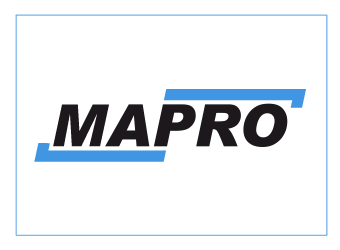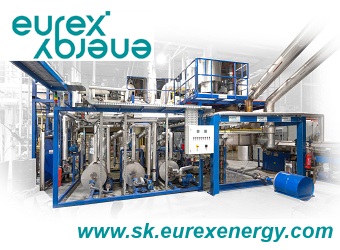Tržní ceny komoditních plastů týdně
Uvádíme zde tržní ceny různých typů komoditních plastů PE-LD, PE-HD, PP a PS ve střední a východní Evropě se zpožděním 5 týdnů. Údaje zpracoval náš partner myCEPPI.
Zajímají Vás aktuální ceny komoditních plastů? Objednejte si tuto službu Týdenní ceny komoditních plastů u nás v redakci.
Ceny na týden 50/2017
Ambiguously moving polyolefin prices, polystyrene price clearly increasing
The following factors influenced “commodity” polymer prices and price expectations last week:
- BRENT oil price 62.20 USD/barrel, stagnating
- EUR/USD: 1.1763, getting stronger
- Naphtha: 568.43 USD/t, slightly dropping
- Ethylene C2: +32 €/t,
- Propylene C3: +32 €/t,
- Styrene monomer +95 €/t,
- In the first week of December the demand is a little bit better than in November,
- short month with practically 20 days,
- low PS supply, mediocre demand
There were mixed price movements on the polyolefin transactions last week. The price of ethylene and propylene alike increased by 32 Euro, but polymer prices did not automatically follow monomer price increase. This is particularly true for polyethylene grades, where local producers usually came up with roll-over. But there were also producers who seized the opportunity to adapt their prices to the market price level, even if this was a price reduction compared to their November list prices. In spite of this demand is not booming. In case of polypropylenes polymer producers tried to enforce monomer price increase. In case of PPR grades they succeeded, but in case of PPC and PPH they did not manage to implement the complete price increase. Polymer producers are faced with a serious dilemma. During the week ahead of them they have to close the majority of December sales. If they fail, then they will be able to sell higher quantities by offering the “usual” end-of-the-year price cuts. But many think a further price increase is possible in January, both in case of PP and PE. In this way it could be worthwhile also for polymer producers to wait. But in this case buying in advance could be a bargain also for converters. But there is also a high risk that demand will not be too vivid in January either. Definitely not in the first half. In this case even a potential monomer price increase will not necessarily bring about polymer price increase. In this case the reduction of the margin of polymer producers seems to be inevitable. Polyolefin producers have got no other choice than to keep their published prices, delaying the reduction of the margin. But some are ready to conclude special agreements in the shadow, to sell high quantities to some major converters below the market price level. But this is just a temporary solution, as its effect (curbing demand) will be palpable in the first quarter. But the price flexibility of non-integrated polymer producers using purchased polymer is very low. They are still forced to keep waiting for the buyers willing to pay the right price.
The 95 EUR SM price increase seems to have been easily accepted by the market. Though this did not mean a spread increase, but 2017 most of the PS margin streamed to the polymer and monomer producers. The short supply of all three grades examined by us facilitated the price increase by polymer producers. It is facilitated also by the expectation that in the first quarter of 2018 three European SM producers will be down for maintenance, which projects a price increase by 3 digits in January. This price increase will probably include a major spread increase.
Polyolefin grades
LDPE producers came up with a mixed strategy on the market, price increase, roll-over, price decrease. All tried to divert their prices to the valid market price range, which is 1,170-1,230 Euro now in all regions. Those who have used a proper pricing, were forced to modify them quickly, because buyers have quickly switched to other purchasing sources. Demand is good compared to the second half of November, but it is not sufficient in the light of the short month of December. In this way it is possible and probable that major regional producers will be forced to carry out a further public and hidden price reduction by 20-40 Euro, in order to achieve their sale objectives in December.
HDPE demand is good, compared to November. Prices are mostly unchanged compared to the end of November. A favorable event is that the cheapest prices exceeded 1,000 Euro again. Monomer price increase was accepted in case of the cheapest products and producers. The bottom of the range is, in case of HDPE BM in all countries and in case of FILM grades in Poland below the price of the ethylene monomer price. Permanently polymer prices cannot be deep below the monomer prices (C2: 1,057 €/ton). In this way prices are under a permanent downward pressure. For the traders HDPE is no business now, in this way probably also the supply will drop, which might be in balance with the demand by the end of December. This is the basis for the settlement of prices by means of price increase.
The HDPE pipe (100) market also switched to December operating mode. Converters place their last orders this year. The price range was 1,340-1,430 €. There was neither spread increase nor margin decrease in December.
The cheapest LLDPE C4 prices dropped by 10-20 Euro, first of all in Poland. The typical price was 1,120 -1,170 € in case of large buyers and 1,190-1,240 € in case of small ones in Poland. In the other countries of the region the typical price range remained unchanged compared to November, it was 1,200-1,250 €.
The prices of mLLDPE increased by 20-30 Euro in the region in December. The price range was 1,250-1,330 €. For the time being the demand is not too high, most contracts are expected in December during the week ahead.
PPH producers came up with a price increase following monomer prices last week. But demand is still low. Plastic converters expected roll-over, the increase surprised them. Those who still could sell in the price range from the end of November, had a good week, while it is hard now to have the price increase accepted. In the region the typical price range was 1,060-1,180 €, depending on the grade and on the size of the buyer. Polymer producers are flexible in terms of prices, they are ready to grant a rebate in the amount of 10-15 Euro for the sake of selling higher quantities.
On the PPC market the price increase by 20-30 Euro was accepted. Demand is good and the supply of certain grades is short. The typical price range came to be 1,180-1,250 Euro. The demand is expected to remain dynamic by the middle of December. The question is: can a price drop be expected in the middle of December? Which would make the remaining inventories of the polymer producers disappear. But most producers expect price increase in January, which makes a major price decrease in December doubtful.
In terms of PPR prices the price increase by 30 € was accepted, the typical price range was 1,240-1,330 €. But we have received also new about offers in the amount of 1,220 € as well. As the supply, similar to the end of November, is short, we expect price stability lasting until the end of December.
The prices of the last week are presented in the table below (full truck load 20-22.5 t):
Grade name | Typical polymer price ranges in the first week of December, 2017, Central Europe (€/ton) |
HDPE BM | 1,000-1,130 |
HDPE Film | 1,030-1,140 |
HDPE IM | 1,000-1,140 |
HDPE Pipe (100) | 1,350-1,420 |
LDPE Film | 1,170-1,250 |
LDPE GP | 1,170-1,250 |
LLDPE C4 | 1,130-1,250 |
PPC | 1,180-1,250 |
PPH IM | 1,050-1,180 |
PPH Raffia | 1,050-1,180 |
PPR | 1,250-1,340 |
GPPS | 1,250-1,470 |
HIPS | 1,450-1,550 |
EPS | 1,620-1,750 |
Polystyrene grades
There was a price increase following monomer prices on the market, in spite of the fact that the presence of materials imported from outside of Europe is not significant on the market. But with regard to December polymer producers remained precautious, they did not increase too much, did not increase the spread. But the market takes a price increase by about 100 € in January for granted, which will be associated with a clear spread increase.
EPS supply is still short, in spite of this polymer producers increased their prices by 80-100 Euro only, due to the weakening demand and to the end of the construction season. The typical price range was 1,620-1,750 € last week. The next 2.5 months will be “low-season” on the market of construction insulation materials. In this way the increase of the “spreads” in January is also a question mark for the producers. Now rather the retention of buyers also during the period outside of the season is important. In this way also January a price increase following monomer prices shall be anticipated.
High GPPS demand with limited supply continue. The SM price increase was “without any ado” accepted on the market. The price range typical for European products was 1,290-1,450 €/ton. The price range of GPPS imported from outside of Europe was 1,250-1,350 €. But these goods are available in the southern region only, in limited quantity. Because of the SM price increase taken for granted high demand might prevail through December.
On the HIPS market supply dropped further. Import from outside of Europe is available almost nowhere, local producers rule on the market. Consequently the price range is 1,490-1,600 €, which includes an average price increase by 100 € compared to November. Due to the short supply, in December demand will seem to be high, backed up by the expected price increase.
| Typ | Cena |
|---|---|
| HDPE blow molding | 1074 € / t |
| HDPE film | 1086 € / t |
| HDPE injection molding | 1068 € / t |
| HDPE pipe (100) | 1382 € / t |
| LDPE film | 1199 € / t |
| LDPE general purpose | 1204 € / t |
| PP co-polymer injection molding | 1229 € / t |
| PP homo-polymer fiber | 1137 € / t |
| PP homo-polymer injection molding | 1142 € / t |
| PPR | 1296 € / t |
| GPPS | 1373 € / t |
| HIPS | 1490 € / t |
| EPS | 1633 € / t |
myCEPPI - nový přístup v poradenství a ve zpravodajství v oblasti plastů. Poskytneme Vám detailní, aktuální a na míru vytvořený obraz o trhu s plasty ve střední a východní Evropě.
Vycházíme z našich osobních a pevných vztahů s významnými hráči v plastikářském průmyslu ve střední a východní Evropě. Každý měsíc provádíme stovky osobních a telefonických hovorů se zpracovateli plastů, distributory a výrobci surovin, účastníme se odborných veletrhů a konferencí.
Informace, které shromažďujeme v rámci tohoto procesu, tvoří základ našich týdenních cenových reportů komoditních plastů. Obsahují také analýzu trhu. Tyto reporty také slouží jako výchozí bod pro naše další konzultační služby které poskytujeme společnostem, které potřebují pomoc při vstupu na trh, případně při rozšiřování svého byznysu, chtějí se orientovat v situací na trhu, atd. Naši odborníci mají desítky let zkušeností s plasty.
Rádi Vám poskytneme naše služby.
Historie cen
- 2024:
- 2023:
- 2022:
- 2021:
- 2020:
- 2019:
- 2018:
- 2017:
Nejnovější inzeráty
-
15.10.2024 | ID: 202419944
Top inzerát Koupím: PP homopolymer k recyklaci
20.11.2024 | ID: 202420101
Koupím: LDPE fólie k recyklaci
20.11.2024 | ID: 202420100
Spolupráce: Poptávka: PE-PP Špinavý zbytkový granulát z podlah
19.11.2024 | ID: 202420097
Koupím: Poptáváme plastové odpady PE
19.11.2024 | ID: 202420096
-
18.11.2024 | ID: 202420093
-
18.11.2024 | ID: 202420092
-
18.11.2024 | ID: 202420091
-
18.11.2024 | ID: 202420090
Koupím: PP homopolymer k recyklaci
20.11.2024 | ID: 202420101
Koupím: LDPE fólie k recyklaci
20.11.2024 | ID: 202420100
Koupím: Poptáváme plastové odpady PE
19.11.2024 | ID: 202420096
-
18.11.2024 | ID: 202420089
Koupím: Nezpracovaný materiál z výroby
18.11.2024 | ID: 202420081
-
18.11.2024 | ID: 202420078
-
16.11.2024 | ID: 202420076
Koupím: Nezpracovaný materiál z výroby
11.11.2024 | ID: 202420053
-
11.11.2024 | ID: 202420043
-
15.10.2024 | ID: 202419944
Top inzerát -
18.11.2024 | ID: 202420093
-
18.11.2024 | ID: 202420092
-
18.11.2024 | ID: 202420091
-
18.11.2024 | ID: 202420090
Prodám: PP-COPO bílý regranulát
18.11.2024 | ID: 202420088
-
18.11.2024 | ID: 202420087
Prodám: HDPE regranulát - natur/bílá
18.11.2024 | ID: 202420086
Prodám: HDPE regranulát - natur
18.11.2024 | ID: 202420085
Nejbližší výstavy a semináře
25.11.2024 - 28.11.2024 | Erbil
26.11.2024 - 29.11.2024 | Shenzhen
28.11.2024 - 30.11.2024 | Riga
04.12.2024 - 07.12.2024 | Istanbul
Plastics Recycling Show India 2024
04.12.2024 - 06.12.2024 | Mumbai
13.12.2024 - 16.12.2024 | Yangon
07.01.2025 - 09.01.2025 | Düsseldorf
World Future Energy Summit 2025
14.01.2025 - 16.01.2025 | Abu Dhabi
22.01.2025 - 23.01.2025 | Paríž
19.11.2024
Plastic, Printing & Packaging, Africa 2024
20.11.2024
Plastics & Rubber Indonesia 2024
20.11.2024
25.11.2024
26.11.2024
19.11.2024
Školení - Technologie vstřikování I.
21.11.2024
Školení - Technologie vstřikování II.
25.11.2024
27.11.2024
Temperace vstřikovacích forem, organizovaná společností PLASTSIM s.r.o.
28.11.2024
Nabídky práce
Obchodně - technický zástupce profesionálního nářadí - celá ČR - ant s.r.o.
20.11.2024
Obchodně technický zástupce společnosti LIFOCOLOR s.r.o.
11.11.2024
Pracovník výroby Brno - LIFOCOLOR, s.r.o.
06.11.2024
Obchodně - technický zástupce, západní Slovensko - Wermaly s.r.o.
05.11.2024
Operátor výroby - kontrola plastových výrobků - ESOX-PLAST s.r.o.
30.10.2024
Disponent logistiky pro plastové výlisky - JASPLASTIK-SK spol. s r.o.
30.10.2024
Seřizovač - seřizovač vstřikolisů - Plasted spol.s r.o.
14.10.2024
Nastavovač - AIS Automotive Interior Systems Slovakia s.r.o.
11.10.2024
Pořadač vstřikolisů junior - Nanogate Slovakia s.r.o.
09.10.2024
Plastikářský slovník






